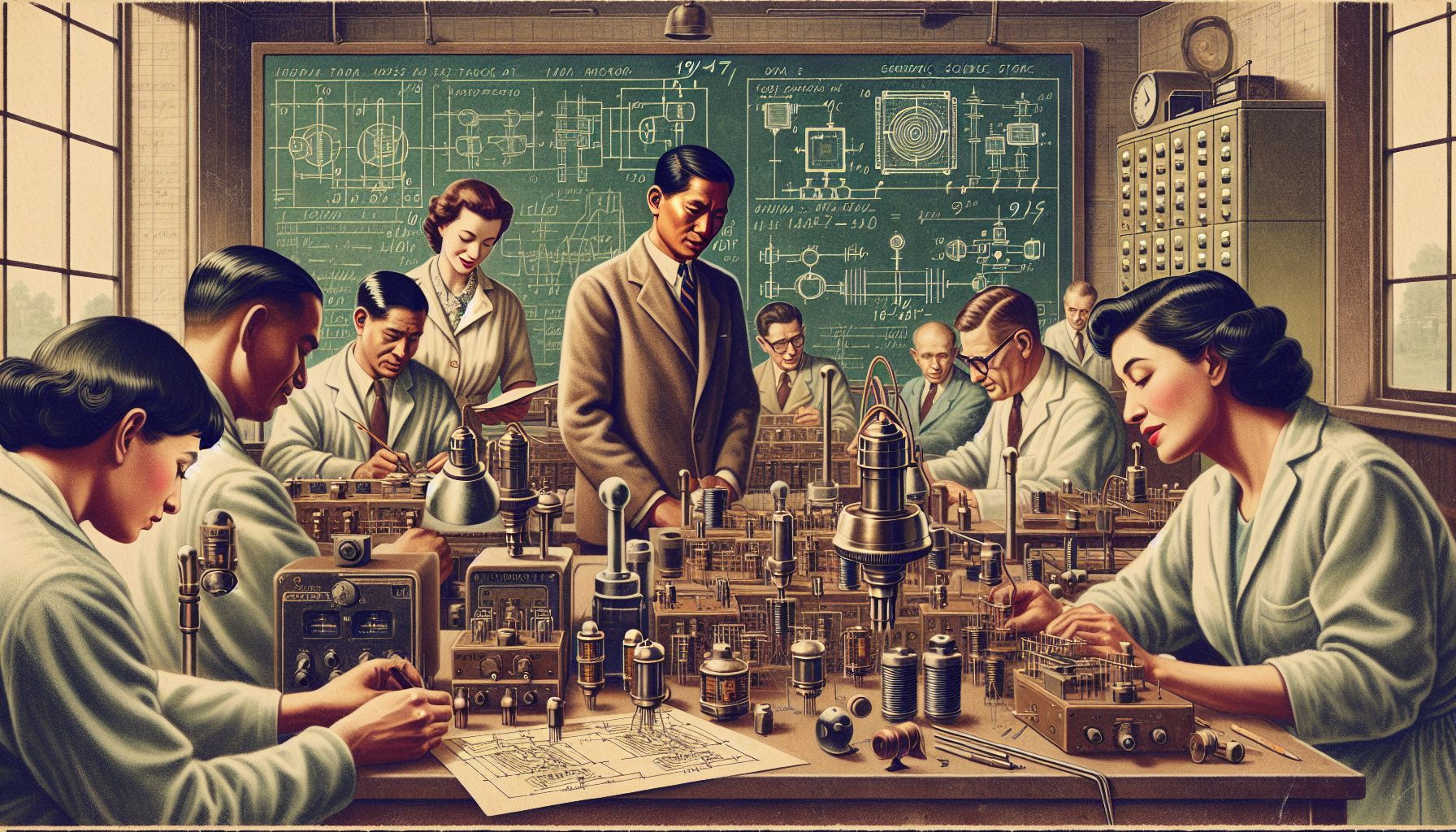📌 Let’s explore the topic in depth and see what insights we can uncover.
⚡ “Imagine living in a world where electronic devices are the size of your entire living room! Welcome to life before 1947 - before the game-changing invention of the humble transistor at Bell Labs.”
In 1947, a groundbreaking invention emerged from the laboratories of Bell Telephone Laboratories that would forever change the world of electronics. This invention, the transistor, became the building block for most modern electronic devices, from mobile phones to computers. The transistor’s story is one of perseverance, innovation, and scientific breakthrough that continues to inspire future generations of inventors and engineers. In this blog post, we will delve into the fascinating journey of the transistor’s invention at Bell Labs, shining a light on the circumstances, the innovators, and the impact of this pivotal invention. Our journey into the world of the transistor will not only illuminate the scientific prowess of its inventors but also highlight the transformative power of innovation.
🧪 The Genesis of the Transistor

Discovering Transistor's Genesis at Bell Labs, 1947.
The development of the transistor began in the early 1940s when the limitations of vacuum tubes became apparent. Despite their widespread use in electronics at the time, vacuum tubes were bulky, consumed a lot of power, and had a limited lifespan. Bell Labs, which was then a division of the American Telephone and Telegraph Company (AT&T), spearheaded the research to find a suitable replacement for vacuum tubes. Three physicists, John Bardeen, Walter Brattain, and William Shockley, were at the forefront of this research. Their initial focus was on semiconductors, specifically silicon and germanium, which had the potential to control electrical current without the need for a vacuum. The trio began experimenting with different configurations of these semiconductors, leading them down a path that would eventually culminate in the invention of the transistor.
💡 The Breakthrough Moment
The breakthrough came in December 1947 when Bardeen and Brattain made a successful amplifier using a germanium crystal and a thin layer of gold foil. They discovered that by applying a small voltage to the germanium, they could control the flow of current, hence the term “transistor,” a portmanteau of “transfer resistor.” This was an unexpected but welcome finding, as it meant that they had created a device that could amplify signals and switch them on and off, just like a vacuum tube, but in a much smaller package and with much less power consumption. Shockley, who was away at the time of this discovery, was initially upset that he hadn’t been a part of the breakthrough. However, he soon made his own contribution by developing an improved design known as the junction transistor, which was easier to manufacture and more reliable in operation.
🚀 The Impact of the Transistor
The invention of the transistor had a profound impact on the world of electronics. Its compact size and low power consumption made it possible to miniaturize electronic devices, leading to the development of portable radios, calculators, and eventually, personal computers and mobile phones. In 1956, the three inventors of the transistor were awarded the Nobel Prize in Physics, a testament to the significance of their invention. The transistor also paved the way for the development of integrated circuits, which are used in virtually all modern electronic devices. By packing thousands, millions, or even billions of transistors onto a single chip, it became possible to create powerful processors that are the brains of our computers, smartphones, and many other devices.
🌎 The Transistor in the Modern World
Today, the humble transistor, born out of the ingenuity and perseverance of three Bell Labs physicists, is a fundamental component of our digital world. From the smartphone in your pocket to the server farms that power the internet, transistors are everywhere. In fact, an average smartphone contains over 3 billion transistors, each one switching on and off billions of times per second to process the information that we consume and produce every day. Transistors have also played a crucial role in the development of renewable energy technologies, such as solar panels and electric cars, by enabling efficient power conversion and control.
🧭 Conclusion
The invention of the transistor at Bell Labs in 1947 was a watershed moment in the history of technology. It marked the beginning of the semiconductor era and laid the foundation for the digital age we live in today. The story of the transistor is a testament to the transformative power of innovation. It reminds us that even the smallest of inventions can have the most profound impacts. But more than anything, it is a tribute to the relentless curiosity and creativity of scientists and engineers who, in their quest for knowledge and understanding, continue to push the boundaries of what is possible. As we stand on the brink of another technological revolution, with the advent of quantum computing, artificial intelligence, and the Internet of Things, the transistor remains a beacon of inspiration, reminding us of the immense potential that lies in a tiny speck of silicon and a spark of ingenuity.
🌐 Thanks for reading — more tech trends coming soon!
